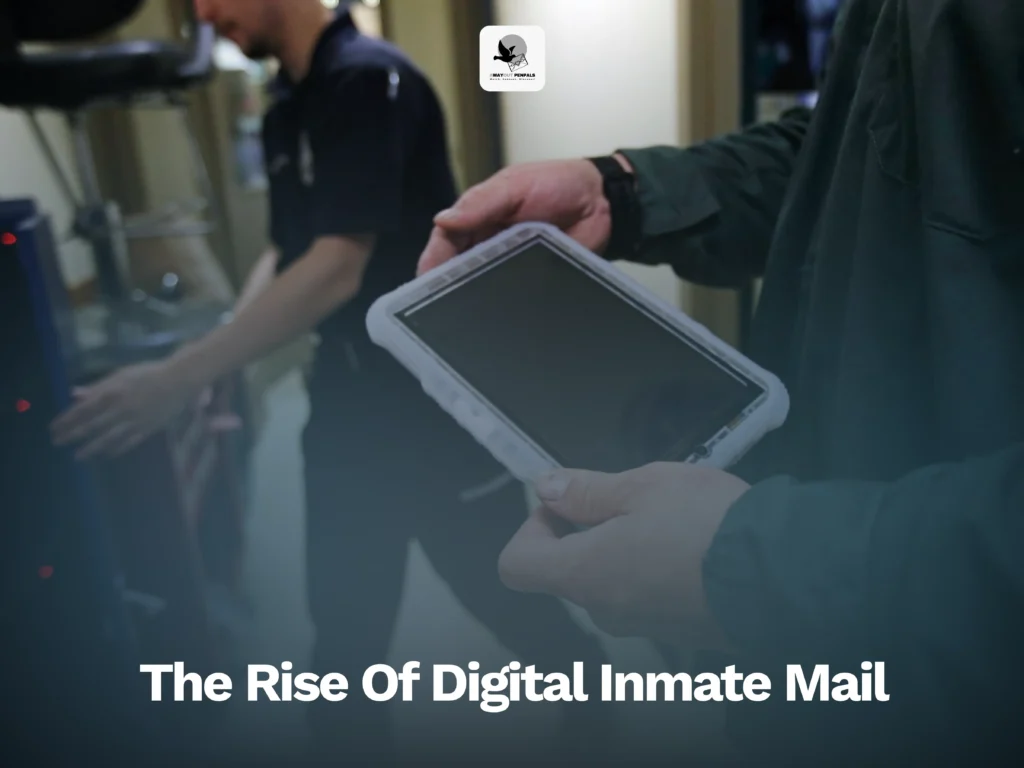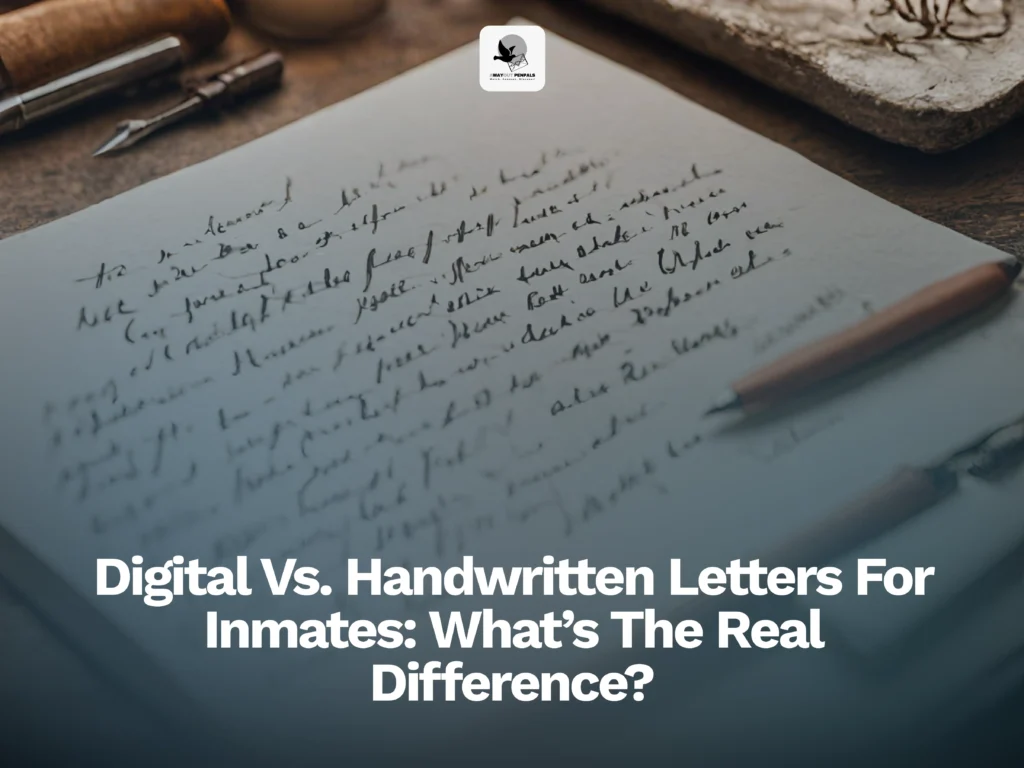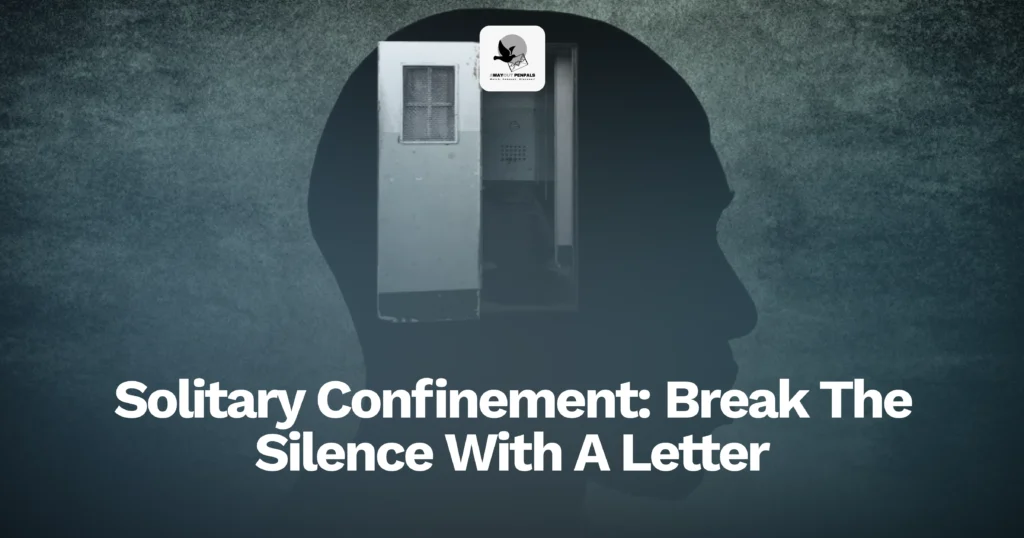Is handwritten mail still powerful in a world going digital?
Let’s be honest, everything around us is going digital. From banking to birthdays, there’s an app or email for it. And yes, even prison communication is shifting to screens. But when it comes to writing to someone incarcerated, do traditional mail & digital messages deliver the same emotional impact?
In this blog, we’re breaking down the difference between traditional mail and digital messages in prisons, from the emotional impact to practical benefits and drawbacks.
The Rise of Digital Inmate Mail

Over the past few years, digital prison communication platforms like JPay have gained serious popularity. These platforms allow people to send emails, photos and even video messages to incarcerated individuals, cutting out mailroom delays and lost envelopes.
These digital inmate mail services are fast, convenient and accessible for many families.
But here’s the twist: not every prison treats digital the same. Some facilities print out the messages, while others allow inmates to read them on kiosks or tablets.
Did you know? Some prisons have phased out physical letters entirely, scanning all mail and delivering it electronically. Learn more from the Prison Policy Initiative.
The Power of Handwritten Letters

Now let’s talk about those classic nostalgic vibes: handwritten letters.
Do you think that it’s very old school? But the fact is, the emotional touch of handwritten letters is unmatched.
You sit down, pen in hand and pour your thoughts onto paper. It’s old school, but it feels different, right?
Benefits of Handwritten Letters for Inmates
Benefits of handwritten letters for inmates include:
- Emotional depth: It feels more personal and meaningful.
- Keepsakes: Inmates can hold on to them, re-read them, smell the paper, even.
- Connection to the outside world: Seeing your handwriting, doodles, or even your mistakes makes it real.
- Therapeutic value: Both for the sender and the recipient, it’s a slow, intentional form of care.
And honestly? In a place where everything feels institutional and digital, choosing between traditional mail & digital messages can shape how deeply that connection is felt.
Digital vs. Handwritten Letters for Inmates: What’s the Real Difference?

| Feature | Digital Messages | Handwritten Letters |
| Delivery Time | Fast (same day or next day) | Slow (can take days to weeks) |
| Cost | Often includes service fees (JPay, GTL) | Only postage cost |
| Privacy | Scanned/stored digitally, may be monitored | Also inspected, but often feels more private |
| Emotional Value | Convenient but may feel impersonal | Deep emotional impact, cherished by many |
| Retention | May be deleted after a time | Can be saved forever, reread often |
So, Which One Should You Use?
See, there’s no answer as it depends on people’s preferences. Some people prefer the convenience of JPay emails for inmates, especially when they want to send quick updates or check-ins.
While some prefer handwritten letters to show love in a more tangible way.
Here are some things to consider before choosing the best option:
- Does your loved one have access to tablets or kiosks in their facility?
- Are you trying to build a deep emotional connection or just stay in touch regularly?
- What’s your budget? Some digital inmate mail services charge per message.
Want to learn more about staying connected with inmates? Check out our blog on Questions to Ask Your Prison Pen Pal.
The Not-So-Perfect Side of Digital Mail
While digital sounds amazing in theory, there are a few prison digital mail disadvantages you should know about:
- Surveillance: Digital messages are often scanned and stored.
- Tech access issues: Not every inmate has access to devices, especially in high-security prisons.
- Cost barriers: Many families can’t afford the per-message or per-minute rates.
And in some places, digital is becoming the only option. That means no more colorful drawings from kids, no perfume sprayed pages, no pieces of the outside world tucked in envelopes.
Final Thoughts: What Truly Matters
At the end of the day, whether you choose digital or handwritten, what matters most is that you’re reaching out.
For someone behind bars, even a few words from the outside can feel like sunshine through concrete.
So ask yourself, when was the last time you wrote something meaningful, just because?
Whether it’s through a screen or on paper, your message matters.
Still not sure what’s best for you? Here’s a quick cheat to help you decide:
- Do you want quick back-and-forth messages? Go for Digital (JPay, CorrLinks, GTL)
- Does your pen pal have access to tablets or kiosks? Go for Digital
- Do you feel your personal and deeply emotional? Go for handwritten
- Are you fine with a longer delivery time? Go for handwritten
- Is cost a major concern for you? Go for handwritten (just postage)
- Do you want to include drawing, poems or photos? Go for handwritten (physical mail has more freedom)
Ready to start writing?
Join Away Out Pen Pals today and connect with someone who could really use a friend.
FAQs
1. What is digital inmate mail?
Digital inmate mail is communication sent electronically to incarcerated individuals using platforms like JPay, CorrLinks, or GTL. It includes messages, photos, and sometimes videos, delivered through kiosks or tablets (if available in that facility).
2. How do handwritten letters compare to digital messages for inmates?
Handwritten letters feel more personal, emotional and tangible. They give inmates something to physically hold and revisit. Digital messages, while fast and convenient, can sometimes feel impersonal and are usually stored or scanned.
3. Can inmates receive both handwritten and digital mail?
That depends on the facility. Some allow both, while others are going fully digital, scanning physical letters and delivering them electronically. Always check with the facility to know what’s allowed.
4. Are digital prison messages private?
Not really. Digital messages are often scanned, monitored, and stored. Even though physical mail is also checked, many people feel handwritten letters offer more emotional privacy.
5. Is JPay the only digital mail option for inmates?
No, JPay is just one popular service. Others include CorrLinks, GTL and Securus. Each has its own features, fees and availability depending on the prison system.
6. How long does it take for a handwritten letter to reach an inmate?
It varies. Usually, it takes anywhere from 3 days to 2 weeks, depending on mailroom processing and the facility’s location. Digital mail, by contrast, can arrive the same day or the next.
7. Why do some people still prefer handwritten letters?
Because they hit differently, handwritten letters carry emotional depth, effort and physical presence, something deeply comforting in a sterile prison environment.
8. Are there any downsides to using digital inmate mail services?
Yes. Some drawbacks include monitoring, tech access issues, high per-message costs, and the lack of physical keepsakes like photos or drawings.
9. Can I send photos or drawings with digital messages?
It depends on the service and facility. Some platforms allow photo uploads, but things like hand drawn art or scented pages can only go through physical mail (if allowed).
10. What’s the cheapest way to stay in touch with an inmate?
Usually, handwritten letters. You just pay for postage. Digital services often charge per message, and the costs can add up quickly for families on a budget.






